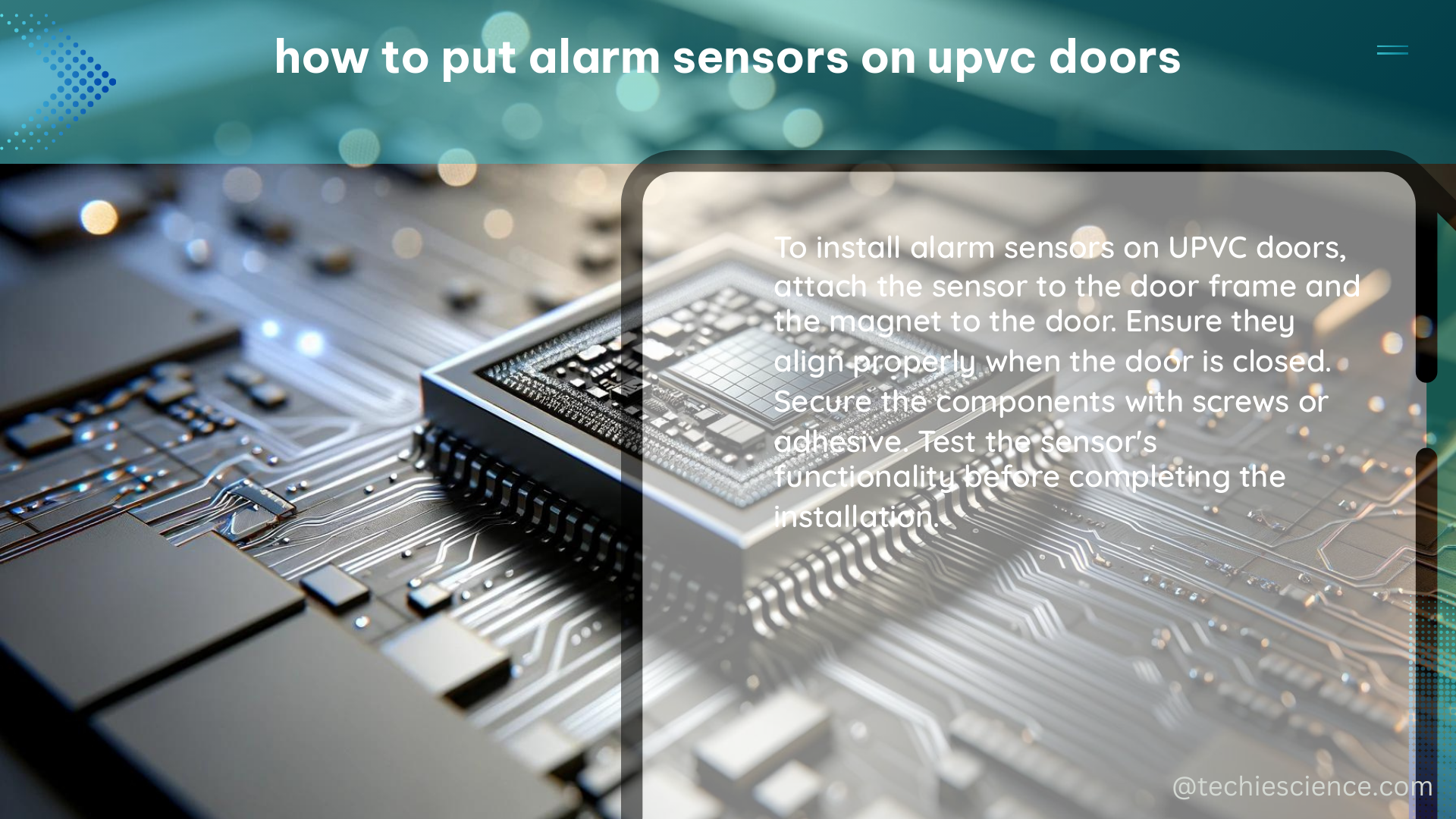Installing alarm sensors on UPVC (Unplasticized Polyvinyl Chloride) doors can be a crucial step in enhancing the security of your home or office. UPVC doors are a popular choice due to their durability, energy efficiency, and low maintenance requirements. However, the unique characteristics of UPVC doors can present some challenges when it comes to sensor installation. This comprehensive guide will walk you through the process of putting alarm sensors on UPVC doors, ensuring optimal performance and security.
Choosing the Right Alarm Sensor
The first step in the process is to select the appropriate alarm sensor for your UPVC door. The Aeon sensors are highly recommended due to their small size, sensitivity, and ability to detect not only open/close movements but also vibrations, angles, and acceleration. These sensors are designed to work seamlessly with UPVC doors, providing reliable and accurate monitoring.
When choosing an alarm sensor, consider the following specifications:
- Sensor Type: Look for sensors that can detect both open/close movements and vibrations, such as the Aeon Multi-Sensor 6.
- Sensor Size: Opt for compact sensors that can be easily installed on UPVC doors without compromising the aesthetics.
- Sensitivity: Ensure that the sensor has adjustable sensitivity settings to minimize false alerts caused by environmental factors.
- Connectivity: Choose sensors that are compatible with your smart home system or security platform, such as SmartThings, Alexa, or Google Home.
Determining the Sensor and Magnet Placement

The placement of the sensor and magnet is crucial for the proper functioning of the alarm system on your UPVC door. The magnet should be level vertically with the sensor but with a gap of approximately 1 cm and set back slightly. This configuration ensures that the sensor can accurately detect the door’s open and closed states.
Sensor Placement
The sensor should be placed on the door frame, ensuring that it is aligned with the magnet on the door. This positioning allows the sensor to detect the door’s movements and trigger the alarm when necessary.
When installing the sensor, consider the following guidelines:
- Alignment: Ensure that the sensor is properly aligned with the magnet, both vertically and horizontally.
- Gap: Maintain a gap of around 1 cm between the sensor and the magnet when the door is closed.
- Placement: Position the sensor on the door frame, ensuring that it is securely mounted and does not interfere with the door’s operation.
Magnet Placement
The magnet should be placed on the door, directly opposite the sensor. The magnet should be level vertically with the sensor and set back slightly, maintaining the 1 cm gap.
When installing the magnet, consider the following:
- Alignment: Ensure that the magnet is level with the sensor and positioned correctly.
- Gap: Maintain a gap of approximately 1 cm between the magnet and the sensor when the door is closed.
- Placement: Position the magnet on the door, ensuring that it is securely mounted and does not interfere with the door’s operation.
Adjusting the Sensor Sensitivity
After installing the sensor and magnet, it is essential to adjust the sensor’s sensitivity to minimize false alerts. The sensor’s sensitivity can be adjusted through the app or control panel of your smart home system or security platform.
When adjusting the sensor’s sensitivity, consider the following factors:
- Environmental Factors: Take into account any vibrations, drafts, or other environmental factors that may trigger false alerts.
- Door Movement: Ensure that the sensor can accurately detect the door’s open and closed states, without triggering false alerts.
- Sensitivity Settings: Experiment with the sensitivity settings to find the optimal balance between detection accuracy and false alert prevention.
Recessed Door Frames
For UPVC doors with recessed door frames, a slightly different approach may be required. In this case, a recessed alarm contact can be used, which involves drilling an appropriate hole in the door frame and placing the magnet inside.
Alternatively, the magnet can be pried out of the plastic casing and installed directly inside the recessed door frame. This method can provide a more discreet and seamless installation, especially in cases where the door frame is deeply recessed.
Conclusion
Putting alarm sensors on UPVC doors requires careful consideration of the sensor and magnet placement, as well as the sensitivity settings. By following the guidelines outlined in this comprehensive guide, you can ensure that your UPVC door alarm system is installed correctly and provides reliable security for your home or office.
Remember to test the system thoroughly after installation and make any necessary adjustments to the sensor’s sensitivity to minimize false alerts. With the right approach, you can enjoy the peace of mind that comes with a well-functioning alarm system on your UPVC doors.
References
- Fitting Multi-Sensor to UPVC Door
- Ideas for Placing Sensor on Recessed Door Frame
- Sensor Placement and Sensitivity Adjustment

The lambdageeks.com Core SME Team is a group of experienced subject matter experts from diverse scientific and technical fields including Physics, Chemistry, Technology,Electronics & Electrical Engineering, Automotive, Mechanical Engineering. Our team collaborates to create high-quality, well-researched articles on a wide range of science and technology topics for the lambdageeks.com website.
All Our Senior SME are having more than 7 Years of experience in the respective fields . They are either Working Industry Professionals or assocaited With different Universities. Refer Our Authors Page to get to know About our Core SMEs.